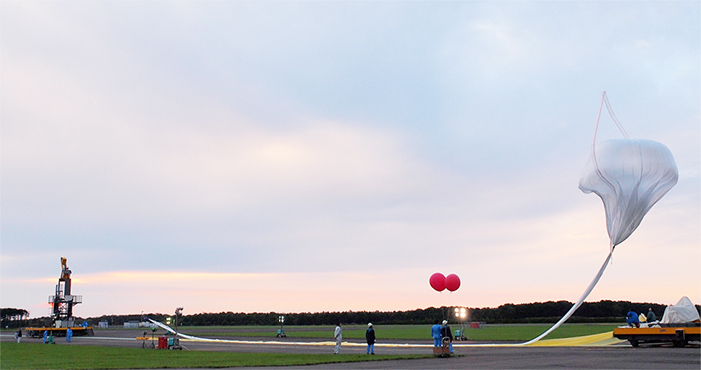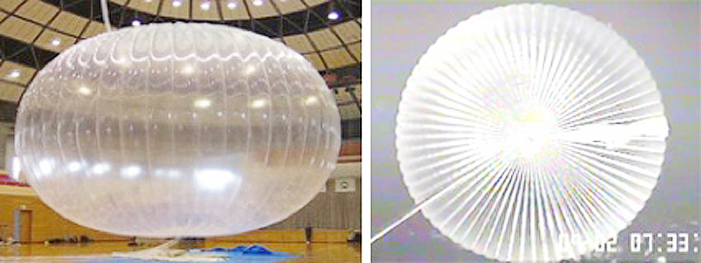Overview of Scientific Ballooning
Scientific observation balloons have been used in space and earth observation as the only flight vehicle that can stay for extended periods in an altitudinal region higher than aircrafts reach and lower than satellites. Balloons play an important role in scientific observation and engineering experiments.
In Japan, the Sanriku Balloon Center (Sanriku-cho, Ohfunato City) has launched about 10 balloons annually, which adds up to more than 400 balloons since its foundation in 1971.
The Balloon Center moved to Taiki-cho, Hokkaido, in April 2008.
Balloons are used for scientific observation in many fields including cosmic-ray physics, infrared astronomy, high-energy space physics, upper-atmospheric physics and space biology. Engineering experiments on new space transportation and exploration technologies are also conducted using balloons.
Research and technical development of next-generation balloons are being carried out for future scientific-observation and space-engineering experiments.
Development of Balloons
New balloons are being developed to broaden the range of possibilities for balloon experiments. Development is focused on thin-film high-altitude balloons for higher altitude flights and super-pressure balloons for longer duration flights.
Performance test (BS13-08) of a high altitude balloon with thin (2.8 micrometer) polyethylene films. The volume of the balloon is 80 000m3 and the thicknes of 2.8 micrometer is the thinnest in the world.
Releaseing of BS13-08
In ISAS, researchers is developing thin-film high-altitude balloons and super-pressure balloons.
Interior expansion test (left) and flight test (right)




